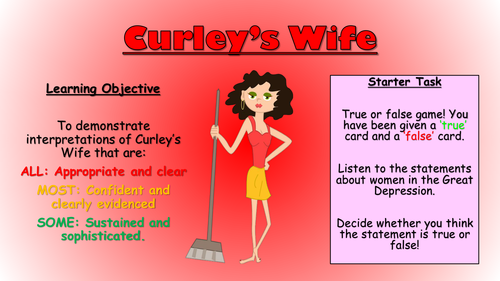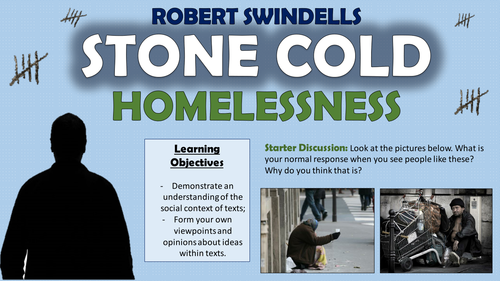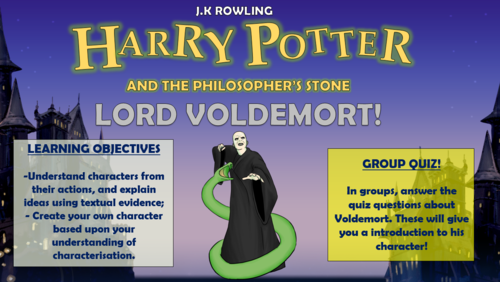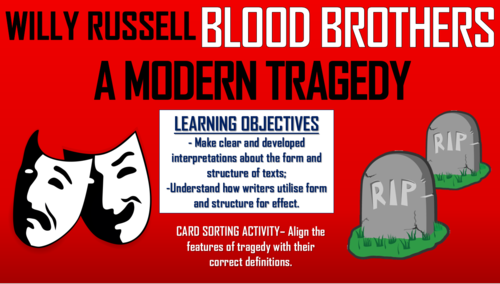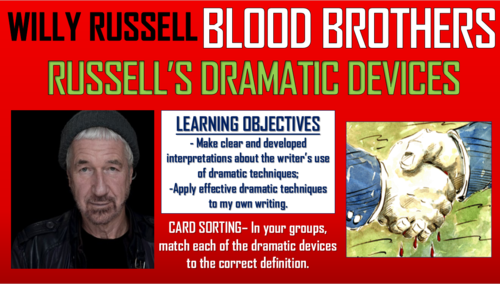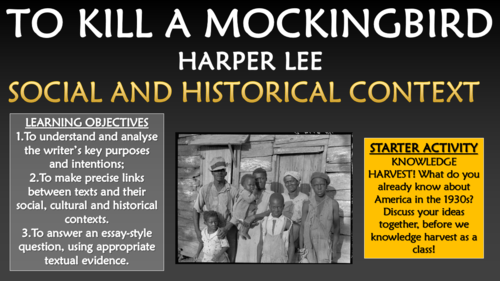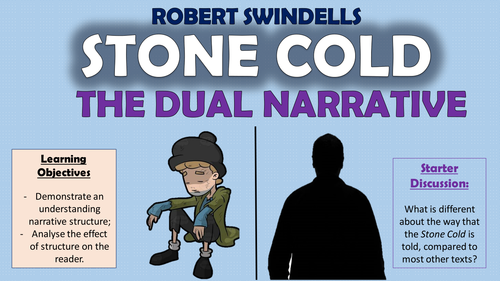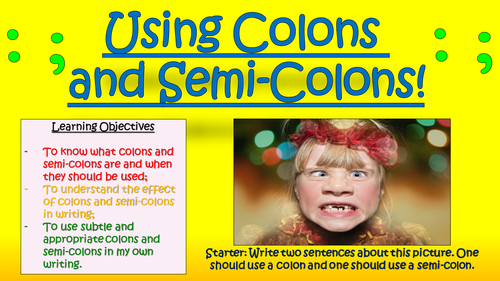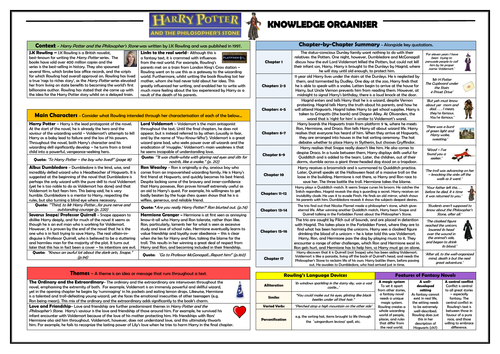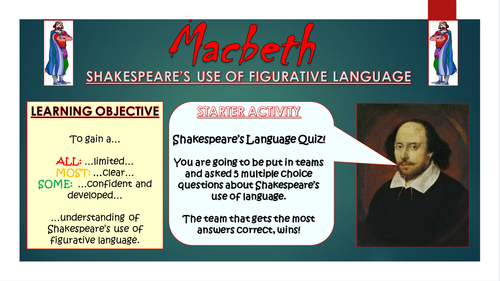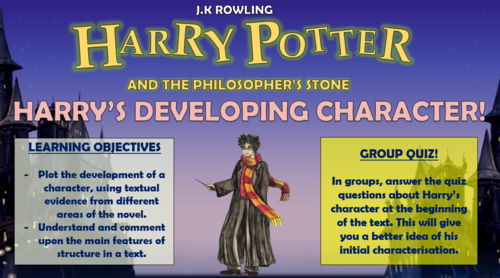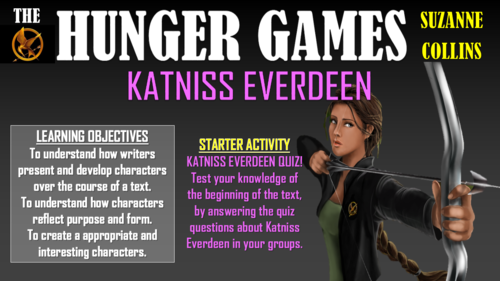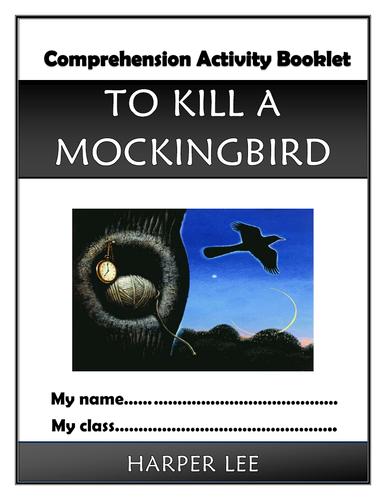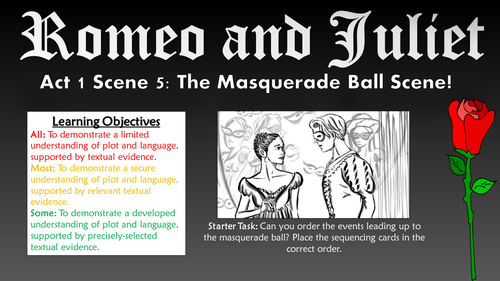
3k+Uploads
1969k+Views
2279k+Downloads
English

George Orwell Knowledge Organiser/ Revision Mat!
This clear, detailed and visually-appealing resource offers a complete reference point for students learning about George Orwell, particularly those studying different authors in English Literature, or completing a history study of ‘Significant Individuals.’ It contains comprehensive sections entitled:
Overview;
Times in His Life;
Important Vocabulary;
George Orwell Timeline;
Answers to the Important Questions;
Top Ten Facts.
The resource is designed to be printed onto either A4 or A3, and is provided as both a PDF and a Word version (so that you can edit if you want to). All images used are licensed for commercial use.

Ozymandias Knowledge Organiser/ Revision Mat!
This detailed and visually-appealing resource offers a complete reference point for students learning or revising Percy Bysshe Shelley’s power and conflict poem 'Ozymandias.’ It contains comprehensive sections on:
Context;
Line-by-Line analysis;
Poetic Devices/ Language Devices;
Themes;
Form/Structure;
Poems for Comparison;
The Poet’s Influences.
Key words and ideas are underlined for easy reference. The resource is designed to be printed onto A3, and is provided as both a PDF and a Word version (so that you can edit if you want to). All images used are licensed for commercial use and are cited on a separate document (included).

Of Mice and Men - Characterisation of Curley's Wife
This engaging and informative lesson aims to improve students' knowledge and understanding of the character of Curley's Wife in Steinbeck's Of Mice and Men: Her dreams, her loneliness, and how her plight is a product of the Great Depression. The lesson also aims to improve students' analytical skills, so that they can demonstrate sustained and sophisticated interpretations of the character.
This pack includes the full lesson presentation, with animations and key information, a double-page worksheet with clear and concise instructions, True and False cards for the starter activity, a writing to analyse help-sheet, and full teacher guidance. The learning journey is clear and progressive, following a pathway of progressively more difficult tasks, including:
- An engaging true or false game to help students understand what life was like for women in the Great Depression;
- A worksheet that enables students to demonstrate understanding of key quotations about Curley's Wife, and also to link Curley's Wife to key themes and ideas.
- Close reading of a modelled analysis paragraph;
- Joint creation of an analysis success criteria;
- An opportunity to answer an exam style question based upon the character of Curley's Wife;
- A chance to peer assess against the success criteria.
All images are licensed for commercial use, and are cited on the final slide of the presentation.
You can choose to buy this resource alone, or as part of the 'Of Mice and Men - All Lessons and Scheme' bundle, which contains seven full lessons, resources, teachers notes, and PowerPoint presentations, plus a Pointless Of Mice and Men game, for just £5!

Stone Cold - Homelessness!
This engaging and informative lesson helps students to understand one of the key themes running throughout Robert Swindells’ Stone Cold: Homelessness. Students use key information, research skills, and extracts from the text to understand how and why homelessness happens and who it can affect, before composing their own arguments about how they believe homelessness should be tackled.
The lesson follows a step-by-step learning journey, in which children learn through:
- Considering their own views towards homeless people, and thinking about how these were formed;
- Researching how and why people become homeless, and who it affects ;
- Reading an extract from 'Stone Cold' in which Link describes a night on the streets, to better empathise with those who are sleeping rough;
- Answering comprehension questions about the extract, considering the writer's use of language and retrieving textual information to back up their ideas;
- Forming their own arguments about how homelessness should be tackled, using their own research and the information gathered throughout the lesson;
- Peer assessing each other's learning attempts;
Included is:
- Whole lesson PowerPoint - colourful and comprehensive;
- Research Template;
- Selected extracts - Stone Cold - Link's description of a night on the streets;
- Writing to Argue Helpsheet;
- Comprehensive lesson plan.
There are also opportunities for group learning, speaking and listening, peer assessment, and whole class discussion. I originally used these resources with a year 8 class, however colleagues have used them for between years 5 and 9 with minimal adaptations. Please note that internet access/ use of research mechanisms is required for the introduction task.
All images are licensed for commercial use, and image rights are listed on the last page of the presentation.

Harry Potter and the Philosopher's Stone - Lord Voldemort!
This engaging and informative lesson enables students to understand the key features of effective villains, as characterised by Lord Voldemort in J.K Rowling’s 'Harry Potter and the Philosopher’s Stone.' In particular, students highlight key character traits of Voldemort evident in Chapter 17 of Harry Potter and the Philosopher’s Stone (e.g. lack of empathy, hideous appearance, links to the hero, and a clear goal/objective), before utilising this understanding to create and describe their own effective villains.
The lesson follows a step-by-step learning journey, in which children learn through:
- Comprehending Voldemort's role in the novel leading up to the Chapter 17;
- Collectively defining the features of effective villains;
- Reading Chapter 17 of Harry Potter and the Philosopher's Stone, identifying and explaining his characterisation as a villain;
- Analysing the effectiveness of each of Rowling's techniques in creating the image of an effective villain;
- Creating and describing their own imaginative villains, utilising the features of villains effectively and imaginatively throughout;
- Peer assessing each other's learning attempts.
Included is:
- Whole lesson PowerPoint - colourful and comprehensive;
- Paper extract of Chapter 17 of Harry Potter and the Philosopher's Stone (freely available online);
- Lord Voldemort analysis template;
- Create Your Own Villain template;
-Comprehensive lesson plan.
All resources are provided in Word (for easy editing) and PDF (to ensure formatting remains fixed between different computers).
There are also opportunities for group learning, speaking and listening, peer assessment, and whole class discussion. I originally used these resources with year 7/8 classes, however colleagues have used them for between years 3 and 10 with some adaptations.
All images are licensed for commercial use, and image rights are listed on the last page of the presentation.

Stone Cold - Shelter!
This engaging and informative lesson helps students to understand the character of the Shelter in ‘Stone Cold’ from his words and actions, and back up their ideas with reference to evidence from the text. Students also consider the Swindells’ language and purposes in the portrayal of his antagonist, before designing their very own villain.
The lesson follows a step-by-step learning journey, in which children learn through:
- Considering the connotations of the name 'Shelter', and how Swindells' character contrasts with these meanings;
- Reading extracts from the narrative viewpoint of Shelter in 'Stone Cold' in Shelter's character is introduced;
- Answering comprehension questions about the extracts, considering the writer's use of language and retrieving textual information to back up their ideas;
- Becoming text detectives, and finding out more information about Shelter's character through skimming and scanning the text;
- Considering Swindells' purpose in his portrayal of Shelter;
- Analysing Swindells' villain, before designing their own;
- Peer assessing each other's learning attempts;
Included is:
- Whole lesson PowerPoint - colourful and comprehensive;
- 'Text Detectives' template (pdf and word);
- Selected extracts - Stone Cold - Shelter's Introduction;
- 'Create Your Own Villain' worksheet (pdf and word);
- Comprehensive lesson plan.
There are also opportunities for group learning, speaking and listening, peer assessment, and whole class discussion. I originally used these resources with a year 8 class, however colleagues have used them for between years 5 and 9 with minimal adaptations.
All images are licensed for commercial use, and image rights are listed on the last page of the presentation.

Blood Brothers - A Modern Tragedy
This engaging and interesting lesson enables students to make clear and developed interpretations regarding the form and structure of Willy Russell’s Blood Brothers. In particular, students learn about the key features of tragedies, identify these in the play, and analyse their effectiveness, considering Russell’s intentions.
The lesson utilises a range of tasks, that require students to be both independent and collaborative learners. It follows this learning journey:
Defining and exemplifying each of the features of tragedies;
Inspecting the play, identifying and analysing Russell’s use of the features of tragedies throughout;
Understanding the writer’s intentions and the anticipated audience reactions through some of the features of tragedies;
Creating a mind map demonstrating the effectiveness of the features of tragedy upon the audience;
Applying their understanding of the features of tragedy in the play to a storyboarding activity;
Self-evaluating their learning in the lesson.
Included in this resource pack are:
A well-presented, thorough, and informative, whole-lesson PowerPoint presentation;
Features of tragedy cards for the card-sorting activity;
‘Text Inspector’ worksheet for the identification task;
Template for the storyboarding activity;
A comprehensive teacher guidance form/lesson plan to assist delivery.
Resources are provided in both Word (for easy editing - find in the zip file)and PDF (to prevent formatting issues between computers).
All images in this resource are licensed for commercial use, and are cited on the final slide of the lesson presentation.

Blood Brothers - Russell's Dramatic Devices!
This engaging and interesting lesson enables students to make clear and developed interpretations regarding Willy Russell’s use of dramatic devices throughout Blood Brothers. In particular, students define eight advanced dramatic techniques used by writers, identify these in selected extracts from the play, and analyse their effectiveness. They then apply their new understanding to their own dramatic scene.
The lesson utilises a range of tasks, that require students to be both independent and collaborative learners. It follows this learning journey:
Defining and exemplifying each of the dramatic devices;
Reading and comprehending extracts from the play, identifying and analysing Russell’s use of dramatic devices throughout;
Understanding the writer’s intentions and the anticipated audience reactions through some of the dramatic devices;
Creating revision cards demonstrating full understanding of the dramatic devices: definitions, examples, effects;
Applying their understanding of dramatic devices to their own imaginative and emotional playscript scenes;
Self-evaluating their learning in the lesson.
Included in this resource pack are:
A well-presented, thorough, and informative, whole-lesson PowerPoint presentation;
Appropriate extracts from the play;
Dramatic devices cards for the card-sorting activity;
Templates for creating the revision cards;
A comprehensive teacher guidance form/lesson plan to assist delivery.
Resources are provided in both Word (for easy editing)and PDF (to prevent formatting issues between computers).
All images in this resource are licensed for commercial use, and are cited on the final slide of the lesson presentation.

Jane Austen - Knowledge Organiser!
This clear, detailed and visually-appealing resource offers a complete reference point for children learning about Jane Austen, particularly those studying different authors in English Literature, or completing a history study of ‘Significant Individuals.’ It contains comprehensive sections entitled:
Overview;
Times in Her Life;
Important Vocabulary;
Jane Austen Timeline;
Answers to the Important Questions;
Top Ten Facts.
The resource is designed to be printed onto either A4 or A3, and is provided as both a PDF and a Word version (so that you can edit if you want to). All images used are licensed for commercial use.

To Kill a Mockingbird - Social and Historical Context!
This engaging and informative lesson enables students to make clear, detailed and well-informed links between Harper Lee’s To Kill a Mockingbird and its social and historical context. In particular, students develop their understanding of the 1930s American South, The Great Depression, and racial inequalities, before connecting this understanding with what they read in precisely-selected extracts.
The lesson follows a step-by-step learning journey, in which children learn through:
Creating American South timelines using clearly explained context cards, in order to establish an understanding of context;
Researching further information about the social and historical context of the novel, using a guided research sheet;’
Reading selected extracts from the text, in order to link ideas regarding context and text together;
Analysing how the features of context are portrayed in the novel;
Peer assessing each other’s learning attempts;
Included is:
Whole lesson PowerPoint - colourful and comprehensive;
Timeline Cards
Research Template;
Selected extracts (from chapters 1, 9 and 15);
Essay template
Comprehensive lesson plan.
There are also opportunities for group learning, speaking and listening, peer assessment, and whole class discussion. I originally used these resources with year 10 and 11 classes, however colleagues have used them for between year 8 and year 13 with some adaptations.
Please note that students will need internet access for the research introduction task.
All images are licensed for commercial use, and image rights are listed on the last page of the presentation.

Stone Cold - The Dual Narrative!
This engaging and informative lesson helps students to understand the effects of the dual narrative structure used in Robert Swindells’ Stone Cold. Students consider the purpose of dual narratives and the way in which the structure is employed by Swindells, before analysing the impact that the dual narrative has upon readers.
The lesson follows a step-by-step learning journey, in which children learn through:
- Defining the key term 'dual narrative' and considering famous examples;
- Skimming and scanning 'Stone Cold' to find evidence of the dual narrative in action throughout the text;
- Analysing the effects that dual narratives can have upon the reader, including the rise in dramatic tension and dramatic irony in Stone Cold.
- Storyboarding Stone Cold to reveal how the dual narrative is used throughout for effect;
- Peer assessing each other's learning attempts;
Included is:
- Whole lesson PowerPoint - colourful and comprehensive;
- Storyboard template (pdf and word);
- Dual Narrative Perspectives Worksheet;
- Essay Template;
- Comprehensive lesson plan.
There are also opportunities for group learning, speaking and listening, peer assessment, and whole class discussion. I originally used these resources with a year 8 class, however colleagues have used them for between years 5 and 9 with minimal adaptations.
All images are licensed for commercial use, and image rights are listed on the last page of the presentation.

Using Colons and Semi-Colons!
This interesting and engaging lesson enables students to know what colons and semi-colons are and when they should be used, to understand the effect of colons and semi-colons in the writing of others, and to use subtle and appropriate colons and semi-colons in their own writing.
Over the course of their learning journey, students:
- Define and exemplify what colons and semi-colons are;
- Identify where colons and semi-colons should be placed in writing;
- Place colons and semi-colons into unpunctuated sentences correctly;
- Analyse the effect of colons and semi-colons upon sentences and wider texts;
- Use colons and semi-colons accurately and with subtlety in their own writing;
- Peer and self assess each other's writing attempts.
The resources include:
-Visually engaging whole-lesson PowerPoint;
-Placing Colons and Semi-colons' worksheet (and teacher answer sheet);
-A model example of a colon and semi-colon filled piece of writing for analysis;
-Helpful and comprehensive step-by-step lesson plan.
All images are licensed for commercial use, and are cited on the final page of the slide.

Lord of the Flies: Golding's Language Devices
This interesting and highly-stimulating lesson enables students to gain a clear understanding of the language choices utilised by William Golding’s throughout Chapters 4 and 5 of Lord of the Flies, with particular reference to the advanced figurative language employed in the descriptive sections of the text. Students also learn to analyse the effects of key language choices, with reference to Golding's key intentions throughout the novel.
The lesson follows a clear, logical, bite-size learning journey, which guides students towards differentiated learning objectives. Over the course of this journey, they become able to:
- Define, identify, and exemplify different types of language devices;
- Explain the effects of different language devices on meanings and different audiences;
- Read and understand Chapters Four and Five of the play, with a particular focus upon how Golding utilises language devices to demonstrate the changing feelings and mindsets of the boys on the island;
- Analyse key quotations which utilise effective descriptive devices;
- Analyse the effectiveness of Golding's language devices;
-Peer assess each other's learning attempts.
This resource pack includes:
- A visually engaging whole-lesson PowerPoint presentation;
- Detailed worksheets, with answer sheets where necessary;
- Links to the extracts of the text needed for the lesson (Chapters Four and Five in this case);
- Card sort cards;
- A detailed lesson plan, complete with what the teacher and students should aim to achieve at each stage of the lesson.
All images are licensed for commercial use, and are cited on the final slide of the PowerPoint.

An Inspector Calls: The Context of the Play
These interesting and engaging resources enable students to build their understanding of the context of J.B. Priestley’s play ‘An Inspector Calls.’ In particular, students learn how to make clear and appropriate links between the social and historical context and the play itself. This gives students a really stable knowledge-base from which to make inferences and interpretations about other parts of the play.
The lesson follows a clear, logical, bite-size learning journey, which guides students towards differentiated learning objectives. Over the course of this journey, they become able to:
- Recall the main events that occurred between 1912 and 1945, through an interactive group activity;
- Remember some key information about J.B Priestley and his beliefs;
- Read and understand the opening of the play;
- Make links between the opening of the play and the historical context - both in term of when the play was set, and when it was written;
- Analyse how Priestley links historical context to his characters, in order to get his messages across to the audience;
-Peer/self-assess learning attempts.
This resource pack includes:
- A visually engaging whole-lesson PowerPoint presentation;
- A clear and interesting worksheet for the development task;
- The opening of the text for students to read and interpret;
- Context information cards for the card-sorting game;
- A detailed lesson plan, complete with what the teacher and students should aim to achieve at each stage of the lesson.
All images are licensed for commercial use, and are cited on the final slide of the PowerPoint.

Harry Potter and the Philosopher's Stone Knowledge Organiser/ Revision Mat!
This detailed and visually-appealing resource offers a complete reference point for students learning or revising J.K Rowling's 'Harry Potter and the Philosopher's Stone.' It contains comprehensive sections on:
- Context;
- Chapter by Chapter Summary (with quotes);
- Main Characters;
- Themes;
- Rowling's Language Devices;
- Features of Fantasy Novels.
All key words and ideas are compartmentalised for easy reference. The resource is designed to be printed onto A3, and is provided as both a PDF and a Word version (so that you can edit if you want to). All images used are licensed for commercial use and are cited on a separate document (included).

Macbeth: Shakespeare's Figurative Language!
This interesting and stimulating lesson aims to improve students’ understanding of Shakespeare’s use of figurative language in Macbeth, focusing particularly on similes, metaphors, personification, hyperbole, and euphemisms. Students learn to analyse the intended effect of these devices through a close-reading and interpretation of Act 5 Scene 1: The sleepwalking scene involving Lady Macbeth.
The lesson utilises a range of tasks, that require students to be visual and interactive learners. It follows this learning journey:
- Defining the key term 'figurative language' and establishing its importance as a literary technique;
- Defining and exemplifying each of the key terms 'simile, metaphor, personification, hyperbole, and euphemisms through collaborative group opportunities;
- Understanding how and why figurative language is used to add depth to writers' ideas;
- Reading and interpreting Act 5 Scene 1, and establishing how figurative language impacts upon the scene;
- Reflecting upon why this may/ what effect this may have had on audiences at the time;
- Summarising the events of the scene;
- Peer/self evaluating the learning in the lesson.
Included in this resource pack are:
- A well-presented, thorough, and informative, whole-lesson PowerPoint presentation;
- Resources for the reading and interpreting activity - full scene transcript with space for notes;
- A template to help scaffold the main task, complete with P.E.E instructions;
- Cards for the card sorting group activity
- A comprehensive teacher guidance form/lesson plan to assist delivery.
All images in this resource are licensed for commercial use, and are cited on the final slide of the lesson presentation.

Harry Potter and the Philosopher's Stone - Harry's Developing Character!
This engaging and informative lesson enables students to understand how the lead protagonist of J.K Rowling’s Harry Potter and the Philosopher’s Stone (Harry himself) develops as a character throughout the narrative. In doing so, students learn the key structural features of the ‘Bildungsroman’ genre, and apply these to the different stages of development that Harry experiences. They then go on to design their own Bildungsroman storyboards!
The lesson follows a step-by-step learning journey, in which children learn through:
Comprehending how Harry is initially introduced to the reader;
Reading extracts from Chapters 2, 10 and 17 of Harry Potter and the Philosopher’s Stone, identifying how Harry’s character develops;
Analysing how the story fits the structure of a Bildungsroman novel, and tracking Harry’s development through the stages;
Creating a storyboard for their own Bildungsroman novel;
Self assessing their learning attempts.
Included is:
Whole lesson 30 slide PowerPoint - colourful and comprehensive;
Collated paper extracts of Chapters 2, 10, 17 of Harry Potter and the Philosopher’s Stone;
Harry’s development tracking template;
Create your own Bildungsroman novel storyboard template;
-Comprehensive lesson plan.
All resources are provided in Word (for easy editing) and PDF (to ensure formatting remains fixed between different computers).
There are also opportunities for group learning, speaking and listening, peer assessment, and whole class discussion. I originally used these resources with year 7/8 classes, however colleagues have used them for between years 3 and 10 with some adaptations.
All images are licensed for commercial use, and image rights are listed on the last page of the presentation.

The Hunger Games - Katniss Everdeen!
This engaging and informative lesson enables students to understand how the lead protagonist of Suzanne Collins’ ‘The Hunger Games’ – Katniss Everdeen - develops as a character throughout the novel. In doing so, students learn how she develops and acquires the key skills, characteristics, beliefs, and values to become the complete dystopian heroine.
The lesson follows a step-by-step learning journey, in which children learn through:
Comprehending how Katniss is initially introduced to the reader;
Reading extracts from Chapters 3, 7 and 14 of The Hunger Games, identifying how Katniss’ character develops;
Analysing how her character fits the role of the ‘Dystopian Hero/Heroine’, and matching her traits to the different features of this character form;
Applying their understanding by creating their own Dystopian Hero/Heroine;
Self assessing their learning attempts.
Included is:
Whole lesson PowerPoint - colourful and comprehensive;’
Extracts from The Hunger Games (from Chapters 3, 7, and 14);
Character Profile for Katniss Everdeen;
Blank Template for Creating a Dystopian Hero/Heroine;
A comprehensive lesson plan;
All resources are provided in Word (for easy editing) and PDF (to ensure formatting remains fixed between different computers).
There are also opportunities for group learning, speaking and listening, peer assessment, and whole class discussion. I originally used these resources with year 8 classes, however colleagues have used them for between years 5 and 10 with some adaptations.
All images are licensed for commercial use, and image rights are listed on the last page of the presentation.

To Kill a Mockingbird Comprehension Activities Booklet!
This resource booklet contains a wide range of age-appropriate, engaging, and meaningful comprehension activities for use throughout the reading of Harper Lee’s ‘To Kill a Mockingbird.’ Teachers have found them particularly useful in exam revision, comprehension tasks, or guided reading sessions. They are perfect for aiding the progress of students towards meeting the KS4 expectations within the new National Curriculum framework - this makes the tasks suitable for all examining bodies. Students have found these resources extremely engaging, and for teachers there is explicit information within each task regarding which comprehension strands the task is designed to demonstrate. They also relate to key extracts, characters, and themes from the story, ensuring that students gain a deep understanding of the text.
Activities within the booklet include:
‘Context: 'The Great Depression’ - to aid students with ‘Drawing on knowledge of the purpose, audience and context of the writing, including its social, historical and cultural context and the literary tradition to which it belongs, to inform evaluation;’
‘Lee’s Description’ - to aid students with ‘Analysing a writer’s choice of vocabulary, form, grammatical and structural features, and evaluating their effectiveness and impact;’
Boo Radley, Atticus Finch, and Bob Ewell’ - to aid students with ‘Seeking evidence in the text to support a point of view, including justifying inferences with evidence;’
‘Editing the Text’ - to aid students with ‘Making an informed personal response, recognising that other responses to a text are possible and evaluating these.’
Plus many, many more activities (the booklet is around 30 pages in length!) I’ve also added it as a PDF in case the formatting differs on your computer.
All images are licensed for commercial use, and are cited on a separate document (included).

Romeo and Juliet: Act I Scene V - The Masquerade Ball Scene!
This interesting and engaging lesson enables students to gain a detailed understanding of the masquerade ball scene (Romeo and Juliet’s first meeting) in William Shakespeare’s romantic tragedy 'Romeo and Juliet.' Students learn to make sustained and detailed inferences and interpretations in relation to the language and structures utilised by Shakespeare. The lesson also guides them through a close analysis of the figurative language used by the lovers in their opening dialogue.
The lesson utilises a range of tasks, that require students to be attentive and interactive learners. It follows this learning journey:
- Establishing the events that lead up to the Masquerade Ball;
- Reading and interpreting the prologue and Act I Scene V, interpreting and inferring the key meanings;
- Understanding the complications of Romeo and Juliet's feelings for one another;
- Analysing Shakespeare's use of language and structure throughout Romeo and Juliet's opening dialogue;
- Peer/self evaluating the learning in the lesson.
Included in this resource pack are:
- A well-presented, thorough, and informative, whole-lesson PowerPoint presentation;
- Resources for the reading and interpreting activity - full scene transcript with space for notes;
- A template to help scaffold the main task, complete with P.E.E instructions;
- A challenging and thought-provoking worksheet, and an answer sheet for the teacher.
All images in this resource are licensed for commercial use, and are cited on the final slide of the lesson presentation.



